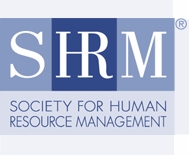 Cost of hire is one of the most elementary of recruiting metrics. Yet if you’ve ever tried to do the math, you’ve discovered just how treacherous it can be.
Cost of hire is one of the most elementary of recruiting metrics. Yet if you’ve ever tried to do the math, you’ve discovered just how treacherous it can be.
Now comes the draft of what may become a national standard for calculating the cost per hire metric. After 18 months of work, a blue-ribbon group of volunteers is looking for public comment on the 43-page document they developed, which details two types of measures — one for internal use and one for external comparison with similar, other employers.
The draft of the proposal by the Cost Per Hire Workforce, led by Jeremy Shapiro of Morgan Stanley, is available here. Comments should be made at the same place. There’s a link at the top left of the page. The deadline is March 18.
 “This is a big thing,” says Lee Webster, director of HR Standards for SHRM. “This could shape the future of (the) field.”
“This is a big thing,” says Lee Webster, director of HR Standards for SHRM. “This could shape the future of (the) field.”
Webster’s enthusiasm for the project is palpable. Infectious, even. SHRM is the official Standards Development Organization, appointed by the American National Standards Institute. Webster facilitates the overall program.
His prediction is solidly grounded in the rising tide of interest within the HR profession for it to have a uniform set of standards by which to measure its performance.
The Cost Per Hire standard is but the first of what Webster says will someday be a “body of performance standards” that will make HR accountable, and give weight and measurable substance to the pronouncements of corporate HR leaders.
He envisions a day when HR executives stand with the CFO, the CEO, and others in the C-suite to detail their effect on the organization and its bottom line, using universally accepted metrics, based on ANSI-approved standards. Indeed, Webster says SHRM has made a proposal to the international standards organization for global HR standards.
With a task force already giving thought to how to determine the financial value of a company’s human capital — a standard, Webster, says, that CFOs are requesting — the day when an HR leader participates in investor and Wall Street analyst conferences may not be far off.
ANSI standards have “the potential of touching off a decade-long sea change in how the profession of human resources will be viewed in the future,” says Gerry Crispin in a blog post about the new CPH draft and the standards development process initiated by SHRM in 2009.
Getting a standard approved by ANSI is a long and arduous process. At a minimum, it involves months of work to produce a draft. The draft, in this case, the proposed CPH standard, then goes through a 45-day public review and comment period.
The task force must address each comment. Sometimes that means the draft standard is amended. When that happens, another 45-day comment period is begun. Webster says the process is so rigorous that one organization has had a standard going through review and modification for more than 50 years.
That’s not likely with the CPH draft. But, the process is designed to ensure thoroughness and consensus, says Webster.
When and if the CPH standard is approved by the ANSI board, companies that follow it are entitled to say so in their reports. Unlike financial reports or building codes, nothing about the standard is mandatory, but those who do adopt it can use the metric to compare their efficiency in hiring to other firms on an apples to apples basis. And their internal presentations will carry more weight.
Webster and Crispin both urge the profession to review the standard and comment on it.
Don’t be daunted by the number of pages. Much of it details the history of the metric, how to cite its use, definitions of terms, even the methodology of collecting the data. All of this is useful. The meat, if you will, the details of what does and doesn’t go into determining CPH, take up barely eight pages.
There you will find what amounts to a checklist of direct and indirect expenses that must be accounted for in calculating CPH. “Must,” here, is not a requirement. It will only become one should the American National Standards Institute approve the submission and should a company wish to have its HR department adhere to the standard. Then you would simply follow the guide.
Nor is the guide so detailed as to create an administrative headache. As the draft standard says “a down to the penny reconciliation of costs” is not required.
The draft released for comment this week is largely the same as that detailed in an Oct. 7th ERE post. There have been some modifications, mostly minor, Webster says.